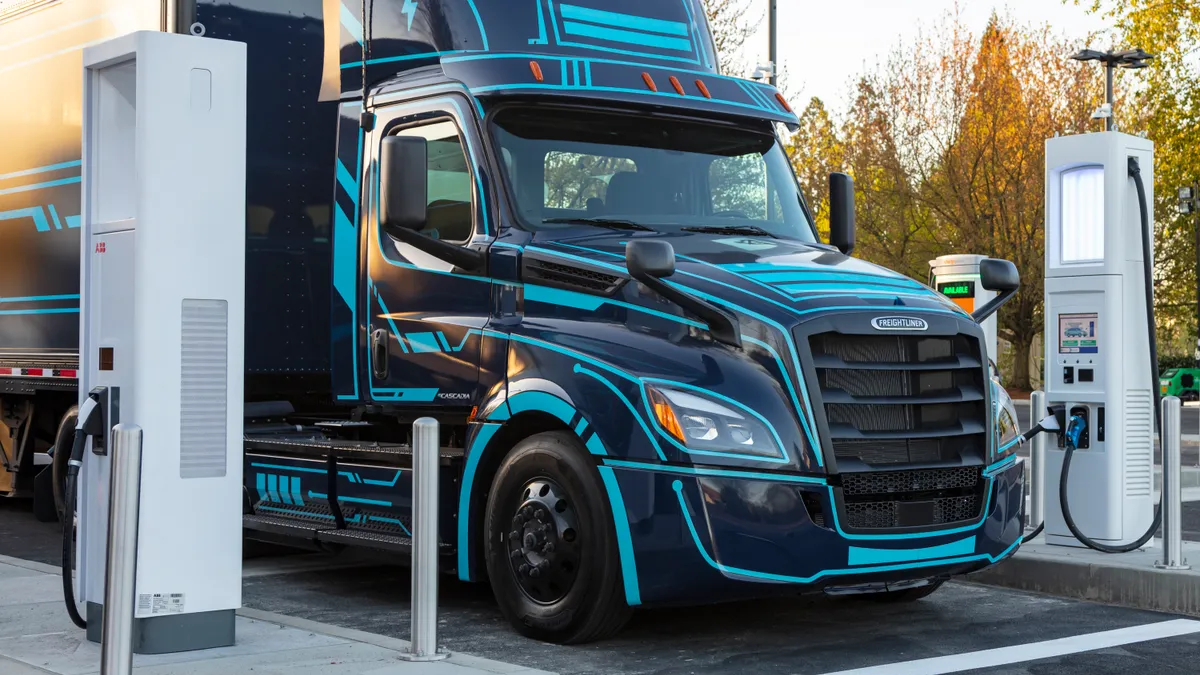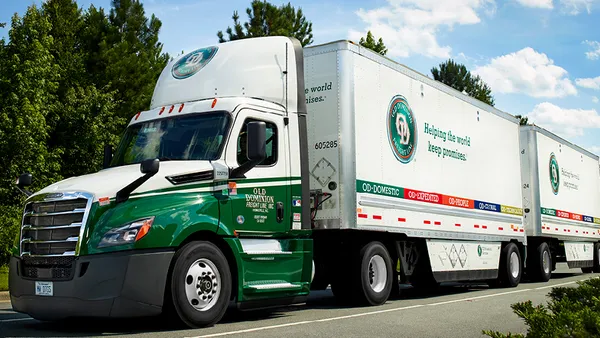Dive Brief:
- The White House announced it will accelerate plans to convert the nation's fleet of heavy trucks, buses and public transit vehicles into zero-emission vehicles — specifically targeting heavy-duty vehicles, which constitute nearly one-quarter of all U.S. transportation greenhouse gas emissions.
- The Environmental Protection Agency is also proposing a rule to curb NOx emissions from new trucks by up to 90% by 2031.
- Among other initiatives, the White House said the Department of Energy would partner with OEMs to expand zero-emission truck technology through the "SuperTruck 3" program, with $127 million in funding focused on "reducing costs and improving durability in hydrogen and battery-electric trucks."
Dive Insight:
The White House has reportedly been looking at the regulatory actions of California to help formulate national plans to convert heavy buses and trucks to zero-emission technology.
Ports, like the Los Angeles and Long Beach ones, are a big part of the initial plan. The Department of Transportation said it will promote cleaner port equipment — such as electric vehicle charging infrastructure for drayage trucks, cargo equipment, and harbor craft — via grants.
And because there have been faster deployments than expected, the EPA said it is considering technical updates to its standards for model years 2027 to 2029 to "better reflect new levels of market penetration in segments with expected zero-emission vehicle deployment."
But zero-emission technology for heavier vehicles is still in development — and very early deployment. According to Calstart, there are only 1,215 zero-emissions vehicles in classes 2b through 8 deployed as of December. Calstart's report said that could increase more than 10 times within 10 years.
For now, more than half of the trucks (738) are in California. The ports of Los Angeles and Long Beach are ideal to deploy new battery-electric and fuel-cell technology because of the short hauls associated with much initial transport. Zero-emission trucks are, for now, also ideal in urban communities because of shorter hauls. The populated area in bigger states are likely why there are 113 deployments in New York and 70 in Texas. Calstart found there are 24 states with no zero-emission truck deployments, even in lighter classes.
One problem for fleets is that battery-electric trucks have limited range, and part of the reason for that is the heavy batteries are limited in how much electricity they can hold. They are also expensive, as new tech often is.
At the Advanced Clean Transportation Expo held near the twin California ports last September, fleet and OEM officials discussed what it would take for more adoption of Class 8 trucks. The answer was two-fold, as given by Kary Schaefer, general manager of product marketing and strategy at Daimler Trucks North America.
Schaefer said heavy-duty battery costs have to come down more than they have in the last few years. And the batteries need to have more density to hold more electricity, for longer range, Schaefer said during a panel of OEM officials.
Cost and reliability were key points raised by stakeholders after the White House announcement.
"We will be looking very closely at the proposal put forth today by the administration, and working with them to shape an outcome that builds on those reductions, while not hurting the reliability of the trucks and trailers we purchase, nor imposing unreasonable or unworkable costs on our industry," said Chris Spear, CEO and president of the American Trucking Associations.
Spear said he wants the Biden administration to set "one, single national NOx emissions standard," and that such a standard can be achieved with "workable, reliable technology — anything less than that will be extremely problematic for ATA and our members."
The Owner-Operator Independent Drivers Association said they have seen ambitious environmental goals hurt the trucking industry before.
"Truckers know all too well from experience with previous rulemakings that poorly implemented regulations will result in breakdowns, downtime, and ultimately set back the goal of achieving cleaner air," said Norita Taylor, OOIDA spokesperson.














